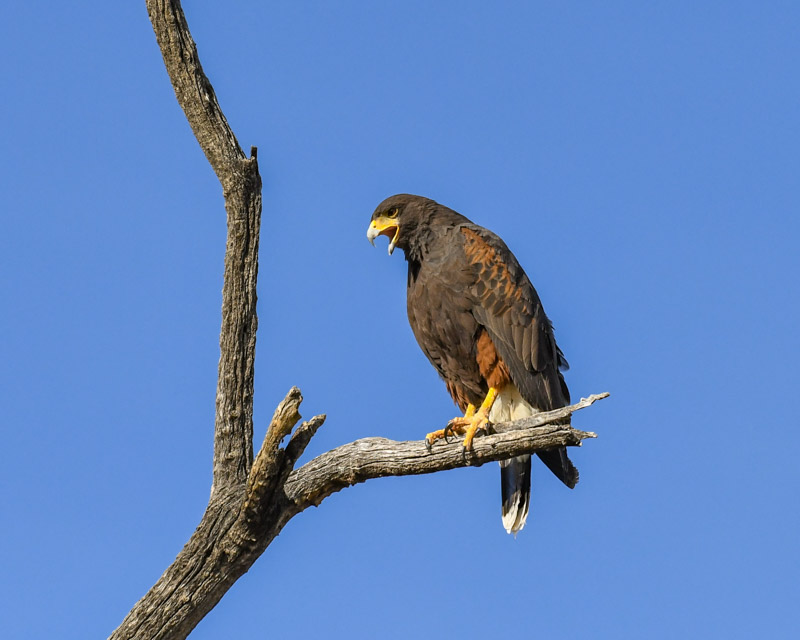By Dan Weisz
Here are some additional photos of the Harris’s Hawk family living mid-town.
One of the raptors on power lines.
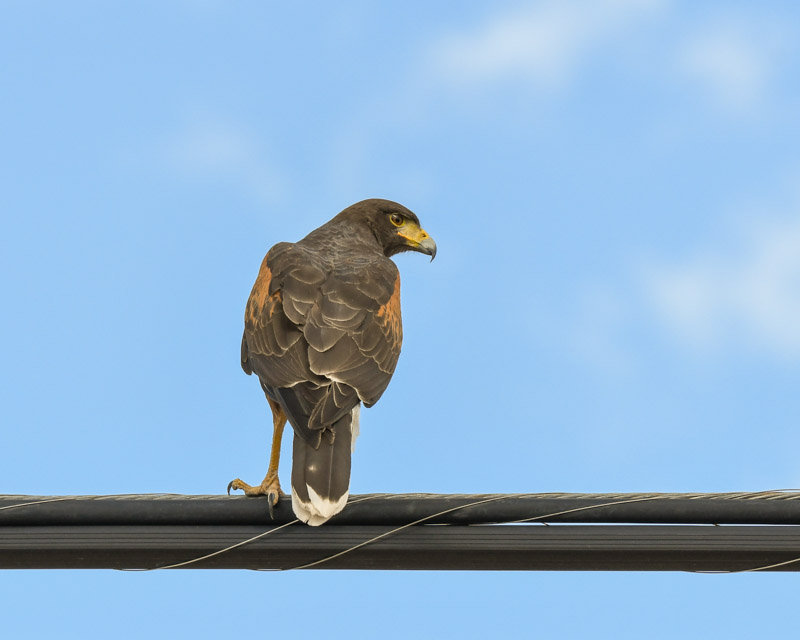
Flying right towards me and apparently calling at the same time.
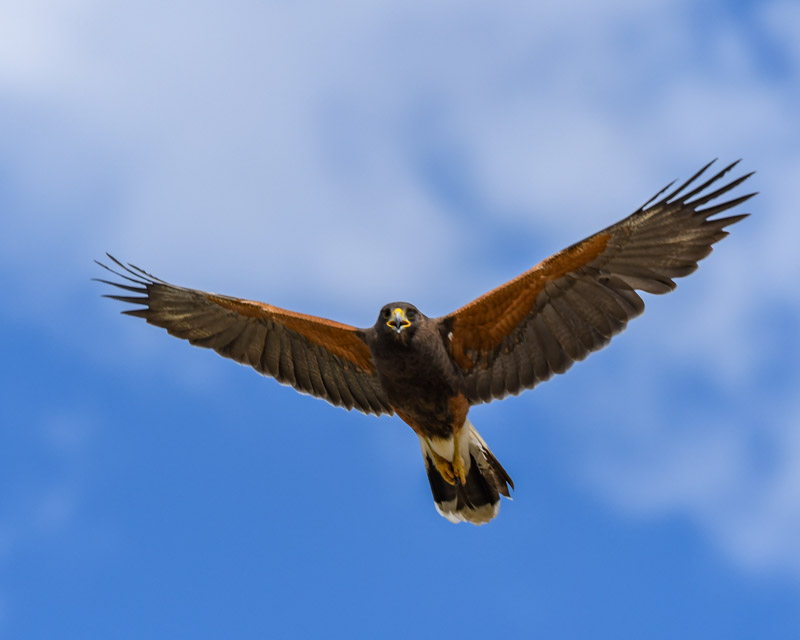
On a windy afternoon, one Harris’s Hawk perched with prey facing the wind. When the bird turned to look for its partner, the wind blew the feathers on the back of its head. The prey appears to be a round-tailed ground squirrel from the looks of the furry tail hanging down.
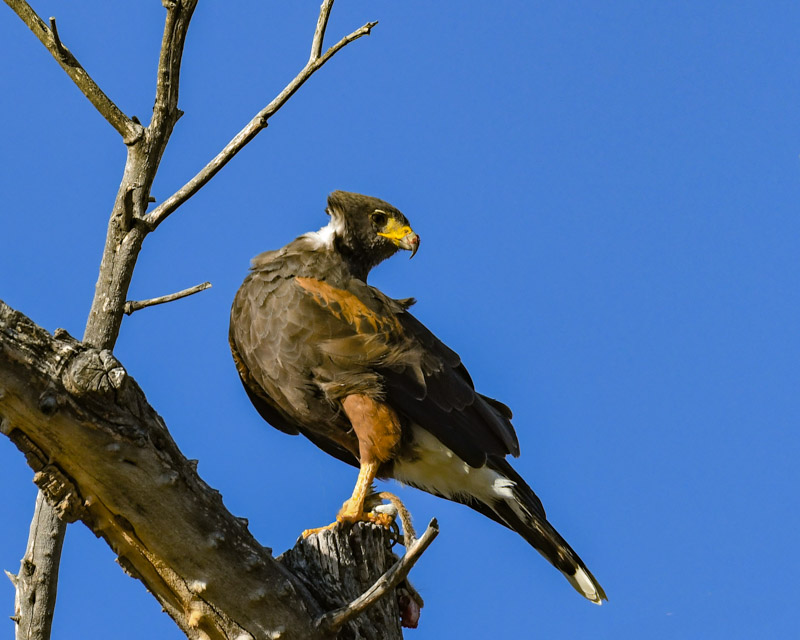
Round-tailed ground squirrels are the tan-colored ground squirrels common in the Tucson area. There are plenty of them in the fallow farmland and desert surrounding the nest tree of these Harris’s Hawks. Their territory is rich with potential prey.
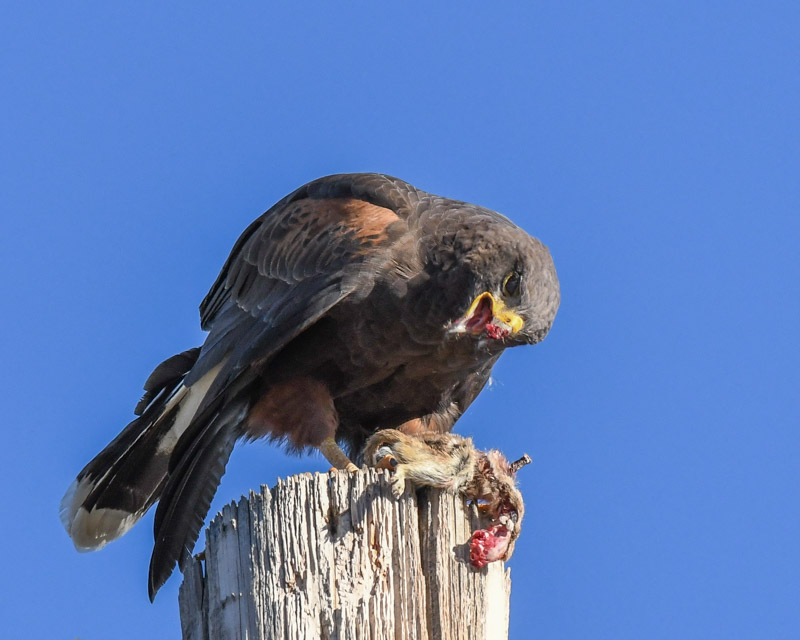
Now on a different pole, the hawk’s nictitating membrane is apparent. During many ‘bites’ or tearing of its prey, the bird covers its eyes with this third, translucent lid to protect its eye.
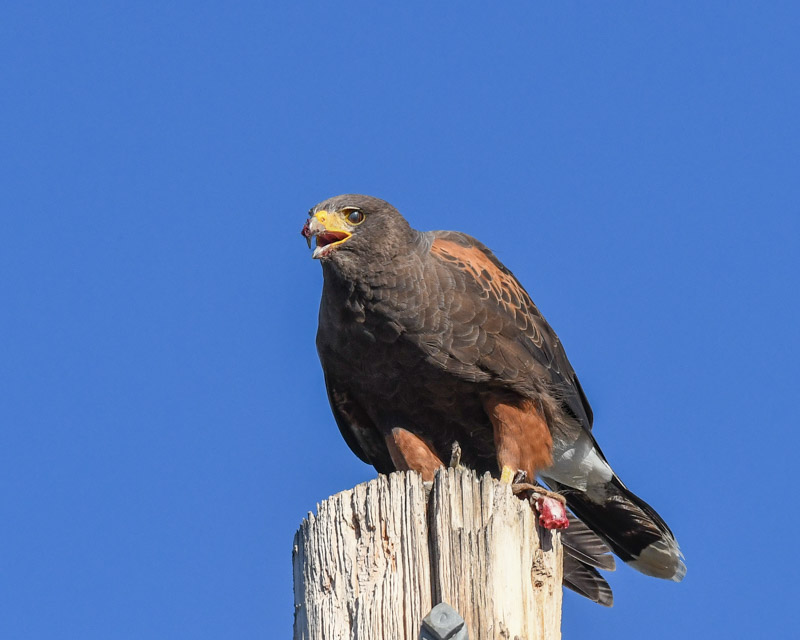
As seems to happen often with this pair of birds when consuming prey, the hawk will eat from one perch for a short while, then fly to another nearby perch and continue consuming its prey, and then fly to another perch. This shot shows the hawk shortly after take-off and a bit of flesh is stuck to its beak.
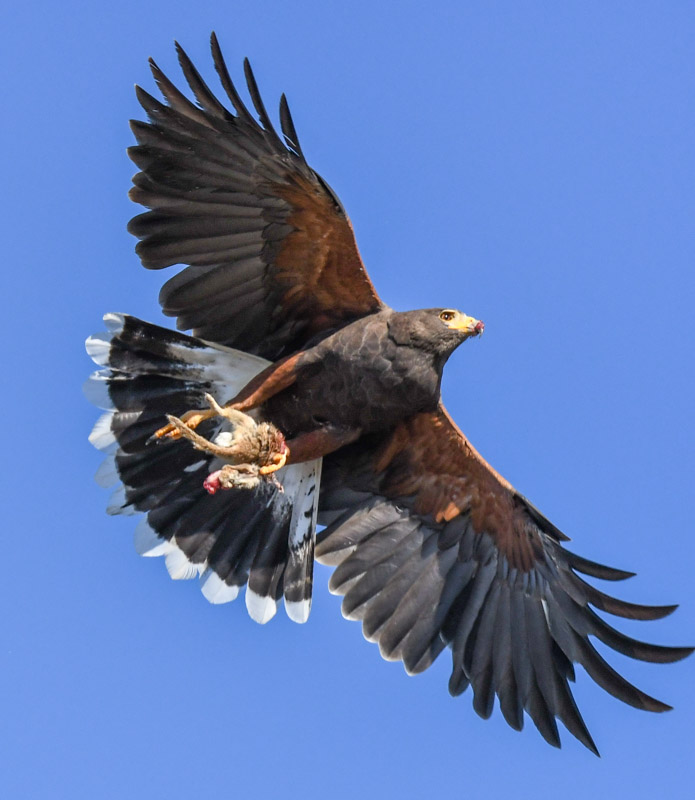
This shot shows the wings mid-flap in a photo immediately following the photo above. I like the separation visible in its left wing as the hawk pulls its wings inward and upward for the next powerful push.
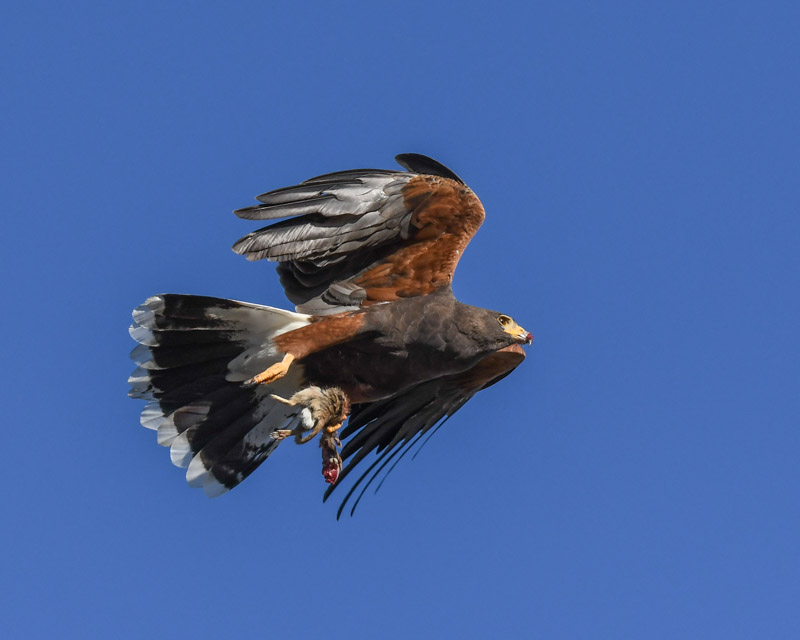
Besides round-tailed ground squirrels, the next most common prey in the area are mourning doves. The Harris’s Hawk nest is in a tree abutting a nursery and is directly above a ‘permanent’ water leak. This provides water for birds which conveniently provides prey for the hawks!!
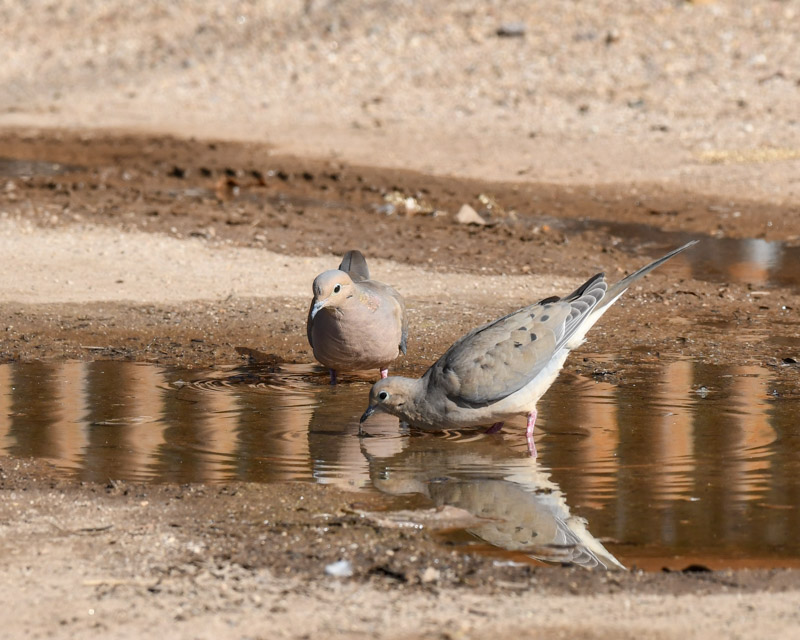
Next to the water leak is a sculpture which provided a picturesque perch for a dove. Mourning doves are one of the most common and widespread birds in America.
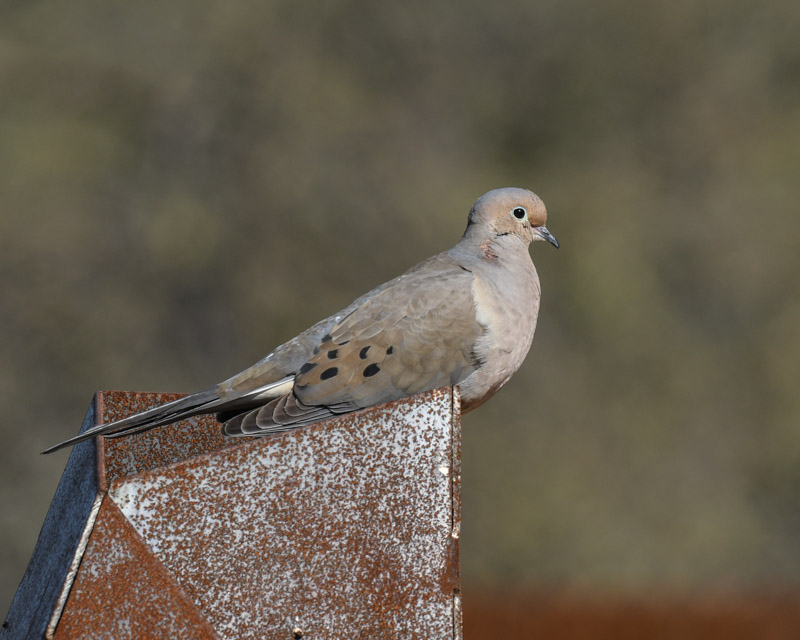
Birds preen daily and seemingly non-stop. They clean and align each and every feather to keep themselves healthy.
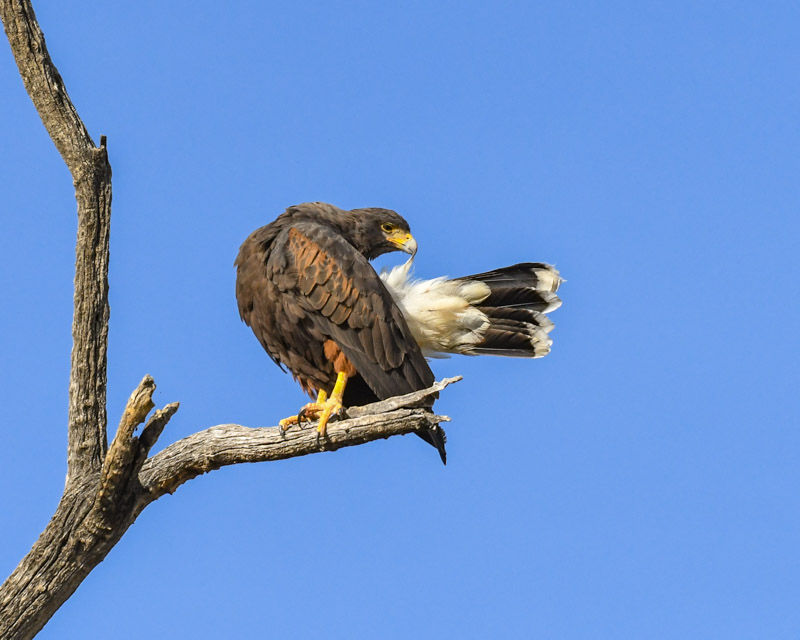
Harris’s Hawks are very social birds and are the only raptor species to hunt in a family group. To maintain this family structure they have developed a variety of calls. In this photo, you can also see the bare skin on the bird’s face. The yellow skin extends from the bird’s nostril to its eye.
